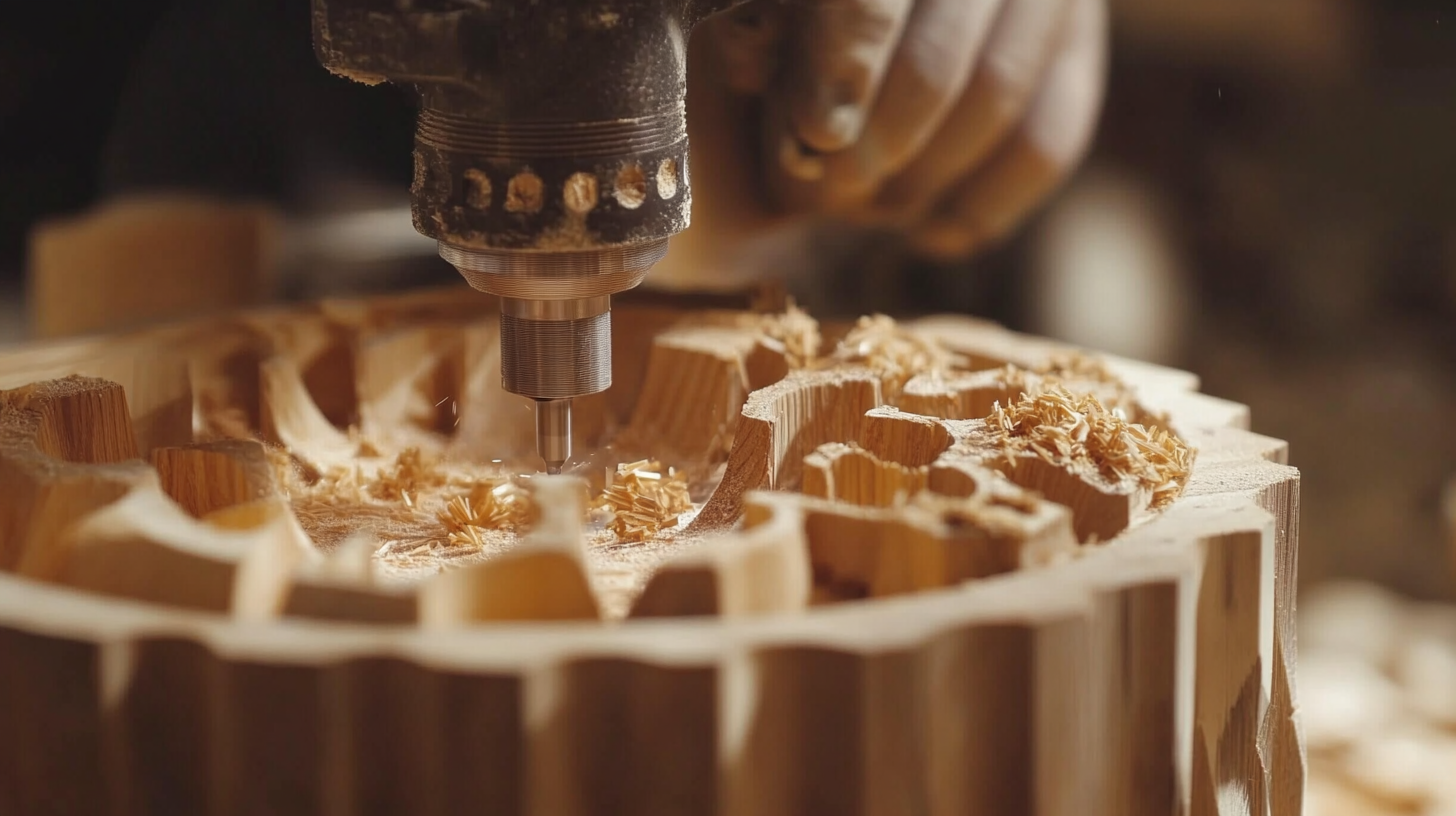When it comes to woodworking, achieving perfect joints is essential for both structural integrity and aesthetic appeal. One of the most effective tools in a woodworker's arsenal for creating these flawless connections is the Tongue And Groove Router Bits. These specialized router bits enable woodworkers to cut precise tongue and groove joints, which not only enhance the visual quality of projects but also provide a robust method of joining panels, flooring, and other wood elements. However, mastering the use of these tools requires knowledge of their intricacies, techniques, and the best practices to follow.
This ultimate guide is designed to equip you with everything you need to know about Tongue And Groove Router Bits. From understanding the anatomy of the bits to tips on selecting the right ones for your projects, we’ll cover it all. Whether you're a seasoned woodworker or a DIY enthusiast, this comprehensive resource will help you refine your skills, enabling you to achieve seamless joints with confidence. Get ready to elevate your woodworking game with expert insights that will turn your visions into reality.

Tongue and groove joints are a popular choice in woodworking due to their unique benefits and versatile applications. These joints consist of a protruding "tongue" on one board that fits snugly into a corresponding "groove" on another, creating a strong and seamless connection. One of the primary advantages of tongue and groove joints is their ability to expand and contract with changes in humidity, making them ideal for flooring, paneling, and ceiling applications where moisture fluctuations are common. In addition to their structural integrity, tongue and groove joints can enhance the aesthetic appeal of a project. When properly aligned, these joints can create a clean and professional look, allowing for smooth transitions between boards. This feature makes them a favorite in the construction of furniture, cabinetry, and decorative wall treatments. Moreover, the ease of assembly enables both novice and experienced woodworkers to achieve a polished result without extensive skill or specialized tools. The versatility of tongue and groove joints extends beyond traditional woodworking. They are increasingly used in modern designs, incorporating materials like plywood, MDF, and even composite materials. This flexibility opens up endless possibilities for creative applications, whether you are crafting a rustic farmhouse table or a sleek contemporary wall panel. Understanding the benefits and applications of tongue and groove joints will not only enhance your woodworking capabilities but also elevate the overall quality of your projects.

When embarking on a woodworking project that requires tongue and groove joints, selecting the right router bit profile is crucial. Router bits come in various shapes and sizes, each tailored for specific tasks. Common profiles include straight bits, cove bits, and ogee bits, and understanding their applications will significantly impact the quality of your joints.
Straight bits are often the go-to choice for achieving clean, precise cuts in both the tongue and the groove. Their simplicity enables seamless joining of edges, making them ideal for traditional tongue and groove applications. In contrast, cove bits can add decorative flair to the edges of your joints, enhancing the aesthetic appeal of the finished product. Utilizing a cove profile alongside a straight bit can create a visually intriguing contrast while maintaining structural integrity.
Lastly, ogee bits can impart an elegant, curved profile to your joints, making them perfect for projects where design sophistication is paramount. However, because they require more skill to handle, it's essential for woodworkers to practice on scrap material before applying these bits to their actual projects. By carefully choosing the right router bit profile, you can transform basic joint construction into a highlight of your craftsmanship.

When working with tongue and groove router bits, mastering the key techniques can significantly enhance your woodworking projects. First and foremost, it’s essential to set up your router accurately. Ensure that the depth of cut is appropriate for the material you are using. A consistent depth is crucial to achieving tight joints that fit seamlessly together. Adjust your router table or handheld router with precision to prevent any mishaps during the cutting process.
Another important technique is choosing the right feed rate. Feeding your workpiece too quickly can lead to rough edges, while moving too slowly may cause excessive wear on your router bits. A moderate and steady feed rate not only ensures clean cuts but also prolongs the lifespan of your tools. Moreover, always practice on scrap wood before working on your final project; this allows you to fine-tune your technique and avoid mistakes that could ruin your workpiece.
Lastly, safety should always be a priority when using tongue and groove router bits. Always wear appropriate safety gear, including goggles and hearing protection. Make sure to keep your hands clear of the cutting area and utilize push sticks to guide your wood through the router. By combining these techniques with a strong emphasis on safety, you can master the art of using tongue and groove router bits, ultimately achieving perfect joints in your woodworking projects.

When working with tongue and groove joints, avoiding common mistakes is crucial for achieving precision and durability in your projects. One prevalent error is improper alignment of the router bit or workpieces. If the pieces are not perfectly aligned during the routing process, it can result in uneven joints that compromise the strength and aesthetic of the finished product. To ensure accurate alignment, use reliable jigs and test the fit of the joints before cutting on your final pieces.
Another mistake to watch out for is using the wrong feed rate when running your materials through the router. If the feed rate is too slow, it can generate excessive heat, leading to burning and a poor finish. Conversely, feeding the material too quickly can result in tear-out and rough edges. To find the optimal feed rate, practice with scrap wood beforehand to calibrate your router settings and achieve a smooth cut.
Additionally, many woodworkers overlook the importance of sharp router bits. Dull bits can create chipping and additional friction, ultimately ruining the precision of the tongue and groove joints. Regularly inspect your tools, sharpen them as needed, and consider using high-quality bits designed specifically for tongue and groove applications to elevate your craftsmanship. By avoiding these common mistakes, you'll improve your technique and produce professional-grade joints that last.
Proper maintenance of tongue and groove router bits is essential for achieving flawless joints and prolonging the lifespan of your tools. According to a report by the Woodworkers Association, regular care can extend the life of your router bits by up to 50%. This underscores the importance of a maintenance routine that includes proper cleaning and storage practices.
To maintain the sharpness of your bits, it's crucial to clean them after each use. Resin buildup can dull cutting edges, which affects precision and may lead to poor joint quality. Industry experts recommend using a dedicated bit cleaner or a solution of vinegar and baking soda to effectively remove debris. Additionally, using a soft brush to gently scrub the bits can prevent any potential damage and keep them in prime condition.
Another key factor to consider is the storage of your router bits. Storing them in a designated case or holder can protect them from accidental bumps and scrapes that can cause nicks or dullness. A survey conducted by the Tool Safety Institute revealed that over 30% of damages to cutting tools occur during improper storage. By investing in a suitable storage system, woodworkers can significantly mitigate these risks and ensure that their router bits are always ready for precision work.